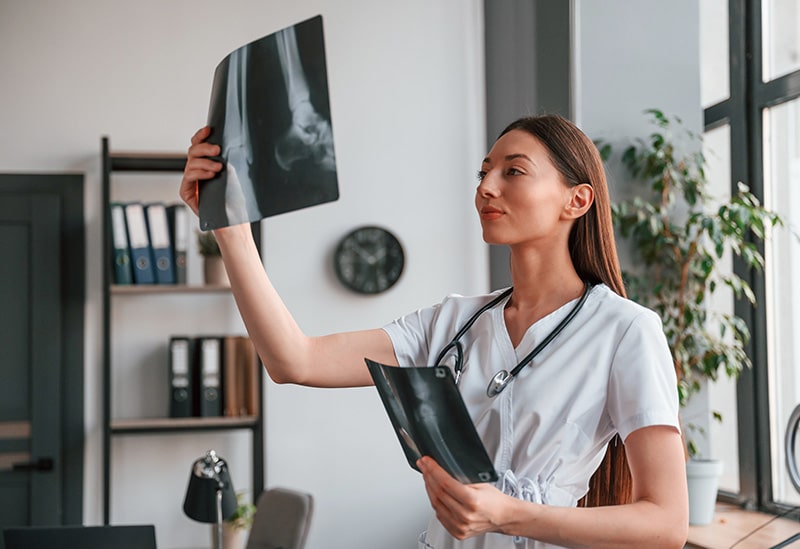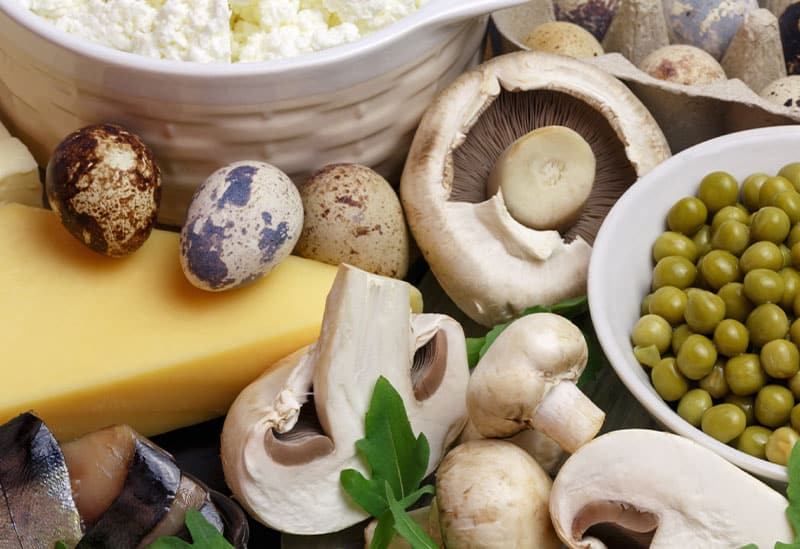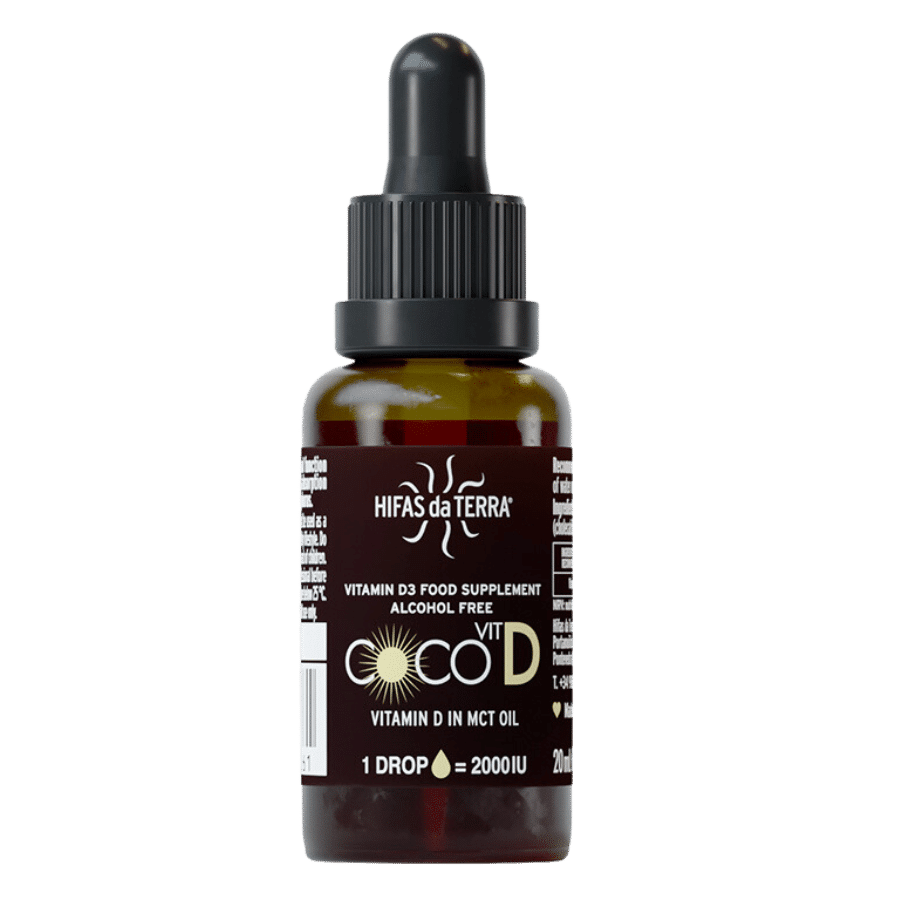Table of Contents
Vitamin D3 is one of the most consumed supplements. Why is this vitamin considered essential? Around 70% of adults have a deficit, which is related to alterations in mood and bone and joint health.
Suppose you value your health above all else. In that case, you will know that vitamin D3, also called cholecalciferol, is essential to help your body better resist the passage of time and the new challenges you set for yourself. Among many of its properties and benefits, we highlight its fundamental role in caring for the immune system and the absorption of minerals such as calcium and phosphorus.
In the following lines, we explain why vitamin D3 helps you on a daily basis, but we emphasize the multiple forms that you can find on the market and the keys to choosing the most appropriate supplement to achieve optimal levels of cholecalciferol. Let’s start. What are the benefits of vitamin D3?

WHAT ARE THE BENEFITS OF VITAMIN D IN THE BODY?
As we have already mentioned, these are the main uses and functions of vitamin D recognized by European health authorities.
- Bone Health – Vitamin D has long been recognized for its critical role in bone health. Promotes intestinal absorption of calcium and phosphorus, essential minerals for the formation and conservation of bone mass. Vitamin D deficiency can cause problems such as rickets in children and osteomalacia in adults.
- Prevention of bone diseases.
- Immune system: Vitamin D is involved in regulating the immune response and may contribute to defence against infections.
- Inflammation: Some research indicates that vitamin D may have anti-inflammatory effects, helping to modulate the body’s inflammatory responses.
- Cardiovascular health: Although the relationship between vitamin D and cardiovascular health is the subject of ongoing research, studies suggest that vitamin D deficiency may be associated with an increased risk of cardiovascular disease.
- Mental health: Low levels of vitamin D are believed to promote an exaggerated immune and inflammatory reaction, which in turn contributes to the risk of suffering from a subtype of depression.
If you don’t want to miss this type of content, SUBSCRIBE HERE to our newsletter. You will receive content of interest to help you make the best decisions to take care of yourself every day.

WHAT ARE THE NEEDS FOR VITAMIN D?
The Spanish Society of Endocrinology and Nutrition (SEEN) has developed a series of recommendations, these are the recommended amounts in international units (UI)
- A daily intake of 600 international units (IU) of vitamin D is recommended for those under 70 years of age and 800 IU for those over 70 years of age.
- For people over 50 years of age, vitamin D supplements of at least 800 IU/day are recommended.
The EFSA (European Food Safety Authority) has set a maximum safe daily dose of 4000 IU. Below this dose, consider that there is no harmful risk to health.
WHAT ARE THE CLINICAL SIGNS OF VITAMIN D DEFICIENCY?
Although marginal, disorders associated with vitamin D deficiency exist and can affect several body systems. It is important to follow the instructions on product labels. The consequences of this deficiency, according to ANSES, are detailed below:
- Muscle disorders: decreased muscle tone, tetany attacks, convulsions;
- Bone disorders: osteomalacia (in adults) and rickets (in growing children), which can cause bone and muscle pain and bone deformities. An inadequate intake of vitamin D can also lead to a reduction in bone mass and, therefore, an increased risk of fracture. These risks are even greater when physical activity is reduced.
- More rarely, vitamin D deficiency can cause anaemia.

NATURAL SOURCES OF VITAMIN D
A MOLECULE NATURALLY SYNTHESIZED IN THE ORGANISM
The molecular discovery of vitamin D molecules has opened the way to studies on the mechanisms underlying its physiological effect. As we have seen, the heart of this natural synthesis by the human body stands proudly above our heads: the sun. The sun’s rays initiate a cascade of reactions in which various organs of our body intervene and which culminate in the synthesis of this precious vitamin D3. This mechanism can be divided into 3 phases:
- The sun’s UVB rays interact with 7-dehydrocholesterol, a compound in skin cells. This interaction forms a vitamin precursor called pre-vitamin D3.
- Previtamin D3 circulates through the blood to the liver, where it undergoes initial transformation to become 25-hydroxyvitamin D, an inactive form.
- When necessary, it travels to the kidneys, where it undergoes a final metamorphosis to become the biologically active form of vitamin D, 1,25-dihydroxyvitamin D.
If you found what you read here interesting, subscribe to our newsletter to stay updated with the latest news in evidence-based natural health.
FOOD: FOOD SOURCES OF VITAMINS
When it comes to vitamins, minerals and trace elements, they are often supplied through the diet. Vitamin D is no exception to this trend since there are many food sources of this molecule. It is available in two forms: vitamin D3 (cholecalciferol) and vitamin D2 (ergocalciferol), some of which are listed below.
- Bluefish: salmon, mackerel, trout and tuna are excellent sources of vitamin D3, enriched by their plankton diet.
- Cod Liver: Although less popular, this nutrient-rich organ is still an ancient but significant source of vitamin D3.
- Eggs: Egg yolks, especially those from free-range chickens, provide modest amounts of vitamin D3.
- Fortified dairy products: Milk and yoghurt, often fortified with vitamin D3, improve your nutritional profile.
- Mushrooms – When exposed to ultraviolet light, “vitamin D-enriched” mushrooms synthesize vitamin D2, providing a vegetarian option for this vitamin. Before exposure to UV light, they naturally contain ergosterol, a precursor to vitamin D.
| Food | Portion | Vitamin D per serving |
|---|---|---|
| Wild Salmon | 100g | 600 – 1000 IU vitamin D3 |
| Salmon from a fish farm | 100g | 100 – 250 IU vitamin D3 |
| Canned sardines | 100g | 300 IU vitamin D3 |
| Canned tuna | 100g | 230 IU vitamin D3 |
| Cod liver oil | 5ml | 400-1000 IU vitamin D3 |
| Egg Yolk | 1 Unit | 20 IU vitamin D3 |
| Fresh Mushrooms | 100g | 100 IU vitamin D2 |
| Sun-dried mushrooms | 100g | 1600 IU vitamin D2 |
VITAMIN D3 AND D2: WHAT ARE THE DIFFERENCES?
In the previous section, we have mentioned two types of vitamins: vitamin D2 and D3.
In both cases, they function as prohormones (which, therefore, do not have any biological effect as such). The only difference between the two is the structure of their side chains, so theoretically, they are used by the organism in the same way.
Although vitamins D2 and D3 have previously been described as undergoing the same processes, research suggests that differences exist due to their different affinities for the vitamin D receptor.
More specifically, researchers believe that vitamin D3 may be the preferred receptor for the liver enzyme responsible for the first metabolic step mentioned above. This specificity, combined with possible variations in the levels of this enzyme in different people, makes it even more important to determine whether these metabolic quirks have a significant impact on overall health.
COCO VIT D: OUR SOLUTION BASED ON VITAMIN D3
COCO Vit D is Hifas da Terra’s food supplement that offers a concentration of 2000 IU of vitamin D3 per drop, in line with daily recommendations. This formulation, which incorporates coconut MCT oil, is designed to meet current needs while respecting the scientific basis of vitamin D supplementation.
The unique feature of COCO Vit D is its precision dosage. Each drop allows meticulous control of daily intake, facilitating personalized adaptation to individual needs. The formulation, which combines vitamin D3 with MCT coconut oil, aims to optimize intestinal absorption, taking advantage of the potential synergies between these components.
Practicality is an intrinsic characteristic of COCO Vit D, which makes the supplement part of the daily routine. Whether mixed with drinks or taken directly, COCO Vit D offers a practical solution, backed by solid science, to maintain optimal vitamin D levels.
MCT coconut oil is more than just a carrier of vitamin D3. It also provides additional benefits by promoting maximum intestinal absorption. COCO Vit D thus takes a holistic, science-based approach to supporting vitality and well-being.
VITAMIN D3 + VITAMIN K2, IS IT NECESSARY TO COMBINE THEM?
Let’s talk about vitamin K2. This vitamin is essential in the regulation of calcium in our body, which is why it is usually combined with vitamin D3 in supplements. However, is this combination really necessary?
- Vitamin D deficiency does have a relevant prevalence in the population, while vitamin K2 deficiency does not.
- In fact, vitamin K2 deficiency is very rare among the adult population unless you follow a diet extremely low in vegetables. Nature already provides excellent sources of vitamin K2, such as certain types of cheese, egg yolk, fermented foods, etc. In addition, green leafy vegetables provide vitamin K1, which is converted into K2 in our body.
- If one of the goals of vitamin D supplementation is to help calcium fixate in the bones, you could opt for a highly concentrated and bioavailable premium vitamin D. In this way, deficiencies and deficiencies of this vitamin will be reversed sooner.
If you have any questions about supplementation and the protocols to follow, the recommendation is always to consult your healthcare professional.
IS THE NATURAL SUN ENOUGH?
Long hours of working indoors, the ubiquity of sunscreens and even concerns about skin ageing have led to a significant reduction in time spent in the sun, which directly impacts the skin’s synthesis of vitamin D.
At the same time, the intake of vitamin D from food may sometimes be insufficient to meet the recommended daily needs, particularly because the amount of vitamin D from these sources can vary considerably (see table).
To confirm this, a major national study has recently shown that
- 80% of people have vitamin D deficiency (levels less than 0.30 ng/L)
- 42.5% have a moderate to severe deficiency (levels <0.20 ng/L)
After conversion, this corresponds to less than 75 and 50 IU per day.
In such situations, vitamin D supplementation is especially helpful. Additionally, certain populations, such as vegans, may have difficulty reaching recommended levels since plant sources of vitamin D are limited.
VITAMIN D: A FIRST HISTORICAL OBSERVATION
When we look at the history of vitamins, minerals and other components used in human health today, we often realize that their history began long before laboratory research. In fact, many civilizations had instinctively and empirically adopted certain behaviours to mitigate the effects of vitamin D deficiency long before tangible knowledge of this substance existed.
As expected, it was through the Sun and its rays that Man first praised the positive effects of vitamin D. It was during one of his visits to Egypt that the Greek Herodotus referred to its existence. During his stopover at an ancient theatre of clashes between Persians and Egyptians, he wondered why Persian skulls were so fragile compared to Egyptian ones. The Egyptians explained to Herodotus that this difference was due to the fact that they exposed their naked heads to sunlight from childhood. On the other hand, the Persians, by covering their heads with turbans, deprived themselves of this direct exposure to the sun, which weakened their skulls.

KEY DATES IN THE MODERN HISTORY OF VITAMIN D3
The history of the modern discovery of vitamin D is very rich and dates back to the beginning of the last century. Many researchers have contributed to its discovery and the understanding of its mechanisms. To shed some light on the topic, let’s review some of the key dates and periods that have surrounded advances in human understanding of this molecule.
- 1919: Sir Edward Mellanby discovers the possible cause of rickets, linked to a reduced intake of the anti-rickets factor (later identified as vitamin A);
- 1920s: Frederick G. Hopkins contributes to the knowledge of essential dietary factors, strengthening nutritional understanding;
- 1920-30: Harriette Chick, influenced by her British colleagues, highlights the crucial importance of vitamin D in the prevention of rickets without distinguishing between vitamin D2 and D3;
- 1936: Adolf Windaus and Walter Norman Haworth identify the chemical structure of vitamin D3, establishing the distinction between vitamin D2 (ergocalciferol) and vitamin D3 (cholecalciferol);
- 1970-1980: Molecular discovery of vitamin D, revealing the structure of vitamins D2 and D3, deepening our understanding of their physiological role;
- Years 1980-1990: Studies delve into the specific health effects of vitamin D2 and vitamin D3, particularly their effectiveness in the treatment of rickets and their implications for bone health;
- Years 2010-2020: Modern studies highlight the importance of vitamin D3 compared to vitamin D2, especially in maintaining blood levels and its health benefits.
WE RECOMMEND

Nootropics for Female Emotional Balance and Hormone Regulation
An exploration of natural remedies tailored for hormonal regulation and emotional well-being, particularly focusing on female-specific supplements.

Tiredness and Fatigue? How to Combat Seasonal tiredness
Asthenia, also known as fatigue, is a common symptom. It becomes abnormal when it is not regulated by rest. We analyse this phenomenon.
PROFESSIONAL ACCESS
ENJOY 5% OFF ON YOUR FIRST ORDER
Be the first to hear about special offers, new products and more.
ENJOY 5% OFF ON YOUR FIRST ORDER
Be the first to hear about special offers, new products and more.
Delivery time and more information:
UK standard delivery:
- £6.61 on orders under £60 and FREE when you spend £60 or more.
- You will receive your order within 3 – 4 working days. Items will be delivered Monday – Friday.
IRELAND delivery:
- 20 € on orders under 200 € and FREE when you spend 200 € or more.
- You will receive your order within 7 working days. Items will be delivered Monday – Friday.
Contact: hello@hifasdaterra.co.uk
Delivery time and more information:
This weekend 17th and 18th of June we are offering free shipping across our website (excludes Ireland). Please note that this offer is temporary it is only valid in the UK.
UK standard delivery:
- You will receive your order within 3 – 4 working days. Items will be delivered Monday – Friday.
UK express delivery:
- £10 Order before 1pm for delivery within 24 to 48 hours on working days.
- Orders placed after 1pm will be processed the next day. Items will be delivered 8am – 8pm (Monday – Sunday). We are not able to give you a specific delivery time.
IRELAND delivery:
- 20 € on orders under 60 € and FREE when you spend 60 € or more.
- You will receive your order within 7 working days. Items will be delivered Monday – Friday.
Contact: hello@hifasdaterra.co.uk


